Ways to monetize on your APIs with a devportal
Breadcrumb
- Home
- PronovixBlog
- Ways to monetize on your APIs with a devportal
BUSINESS CASE FOR DEVELOPER PORTALS
What does the business case for monetization look like in the long term? We present examples as a way to explore popular business model(s) in use for the monetization of APIs. For this article, we are using ‘monetize’ in the broadest sense and not just for direct revenue generation from your APIs.
Differences in business models for monetization are defined through the benefit received by you, your developers/API consumers, and the ultimate end users of your APIs.
Ways you can benefit from your API’s adoption:
Ways your developers/API consumer can benefit from your APIs adoption:
Ways the end user—consumer of the end products involving your APIs—benefits from your APIs adoption:
All three—you, your developers/API consumers, and the end users—must benefit to successfully monetize on an API offering.
Monetization model: Free
Developer portals provide a means to increase adoption of your APIs to your target audience. You benefit from the marketing and subsequent adoption of your interfaces, the API consumers benefit from the self-service documentation and access to use your interfaces for free, and the end user/customer benefits from the end results.
We surveyed the nominees for the 2020 and 2021 DevPortal Awards, asking the question, What business value does your developer portal create? The answers were normalized, collated, and counted from a total population of 42 nominees with some businesses giving multiple answers.
Business value of developer portals
As illustrated above, only 8 of the 42 companies providing a business case for their developer portal mentioned a monetization focus. Instead, most devportals focus on
In addition, some company-level business drivers were listed as follows:
Section 4 of this article, Indirect revenue streams for APIs, goes into more detail of the value benefit to offering APIs for free. There are differences in how internal and external APIs can be leveraged and several models that go beyond a ‘free API offering’.
Monetization model: Developer Pays
For a model where the developer pays, the developer needs to be able to make a living on the API. The developer (or B2B customer) must ultimately receive downstream revenue through the use of your API to balance the expense.
Sections:
Your developer or API consumer pays for what is being used without a minimum or a tier in periodic installments. They need to be able to ‘try it’ before they ‘buy it’ to ascertain that what they are receiving in the transaction is valuable.
Some examples of developer portals following this model are TomTom Developer Portal, Amazon Web Services, IBM Cloud, and Algolia.
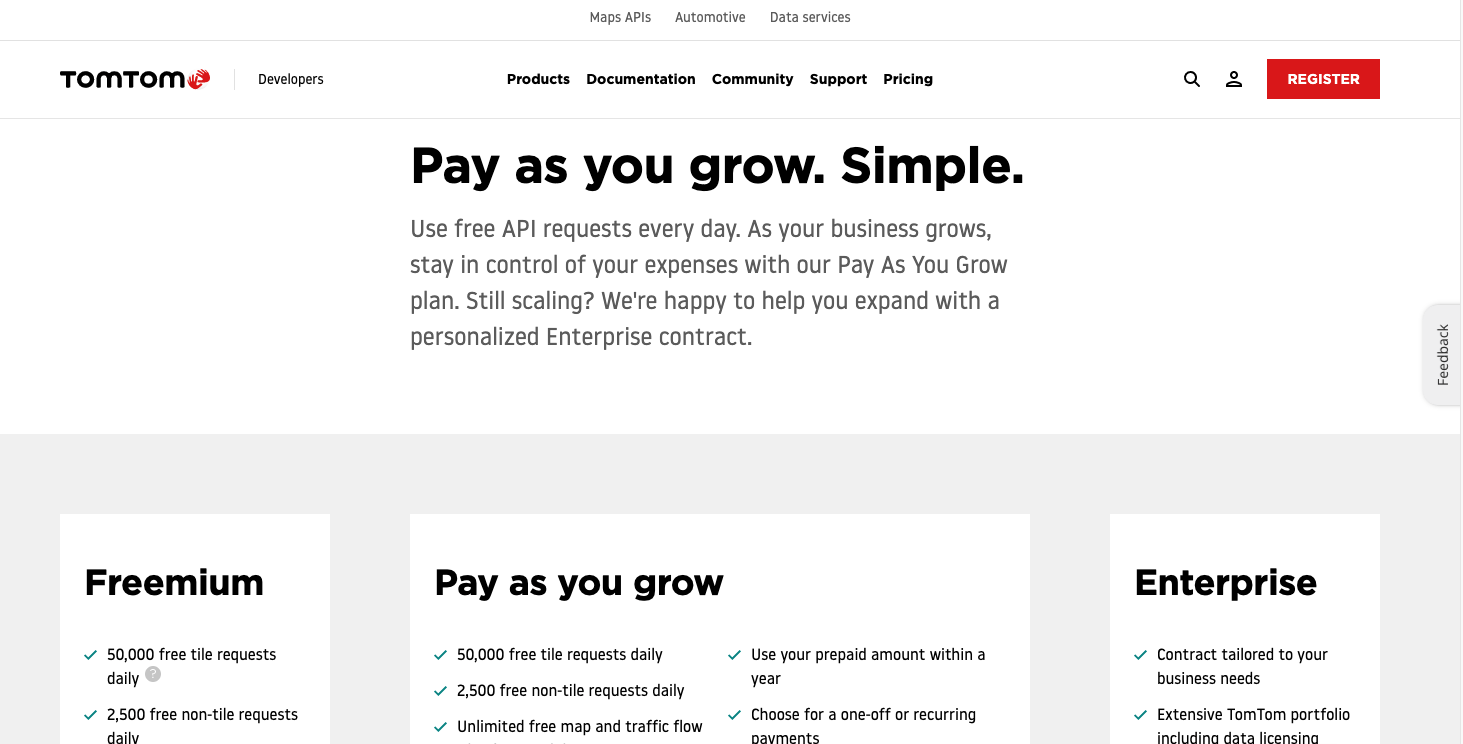
TomTom Developer Portal’s pricing method: B2B customers can make use of free API requests, as business grows, they can move to the Pay As You Grow plan. For more, TomTom Developer Portal also has an Enterprise contract. Screenshot taken, February 16, 2022.

Pay-as-you-go model from Amazon Web Services. Users pay based on their consumption need. Screenshot taken, February 16, 2022.

Users can choose the IBM Cloud’s Pay-as-you-go pricing option. It grants access to several services and products. Screenshot taken, February 16, 2022.
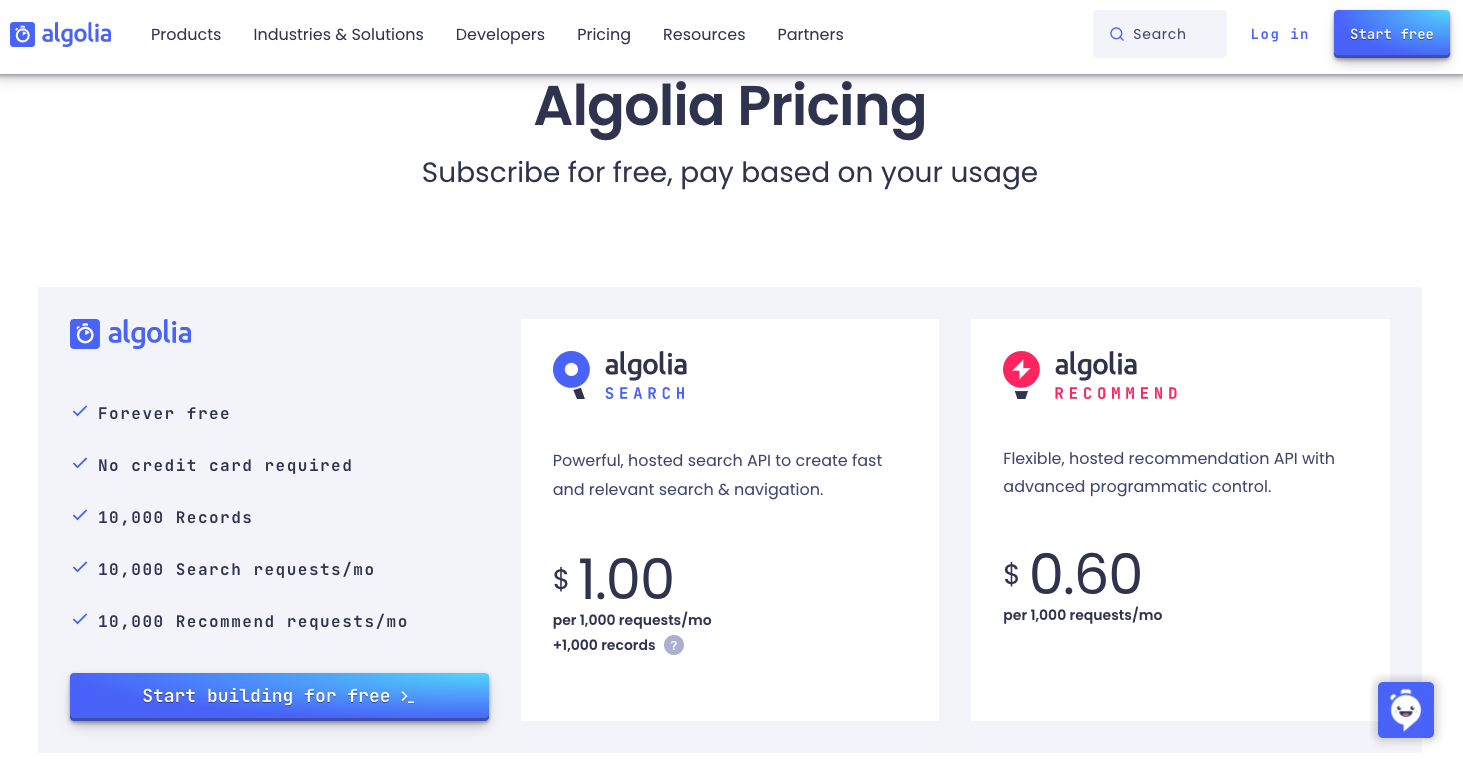
It’s free to subscribe for Algolia’s services. The pricing is based on the actual usage, there are no long term commitments. Screenshot taken, February 16, 2022.
With the freemium model, the basic features of the integration are free. With additional monetary compensation, value added features are available. Some examples of freemium are Dropbox, and ArcGIS Developer.
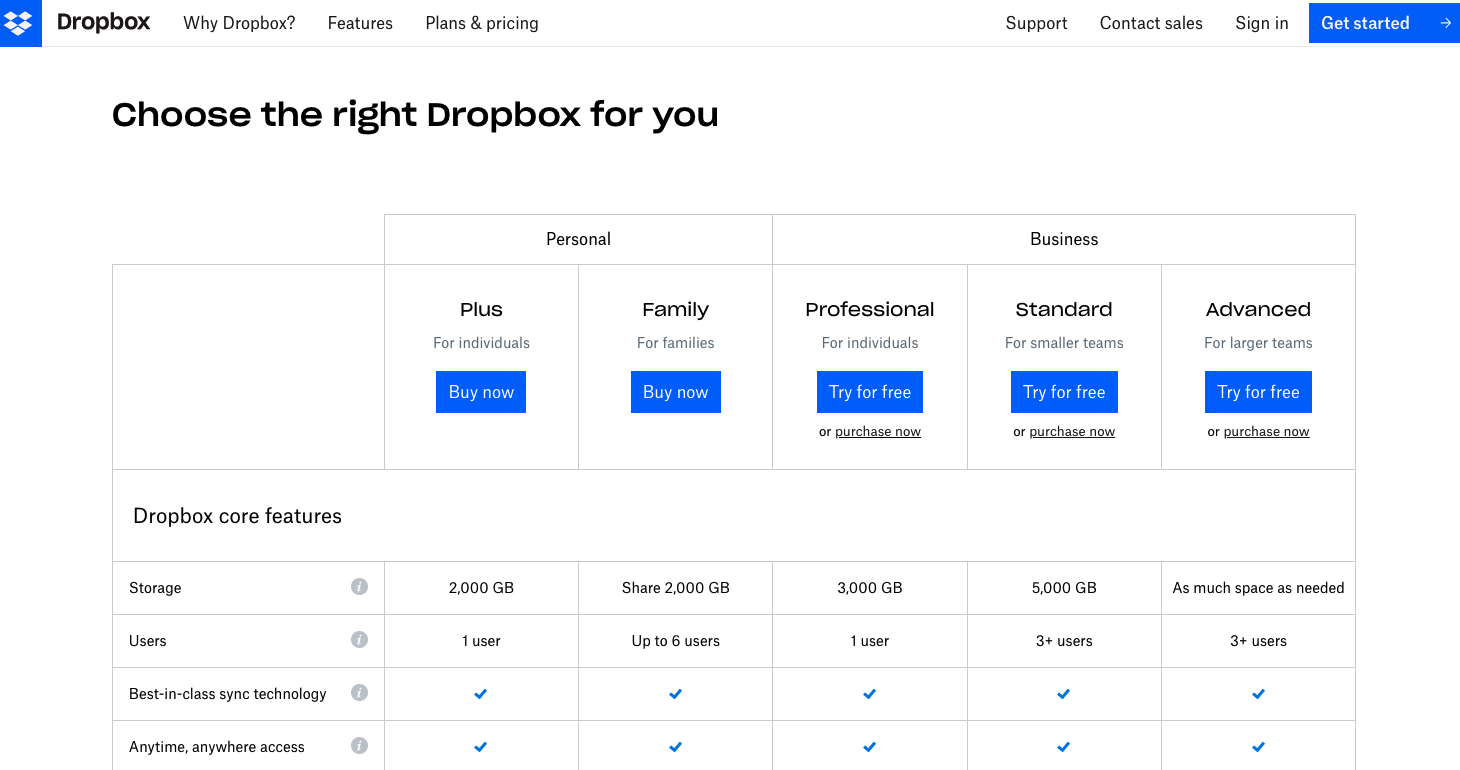
Businesses can try Dropbox’ services for free for a given amount of time (it was 30 days at the time we visited the website). Screenshot taken, February 16, 2022.
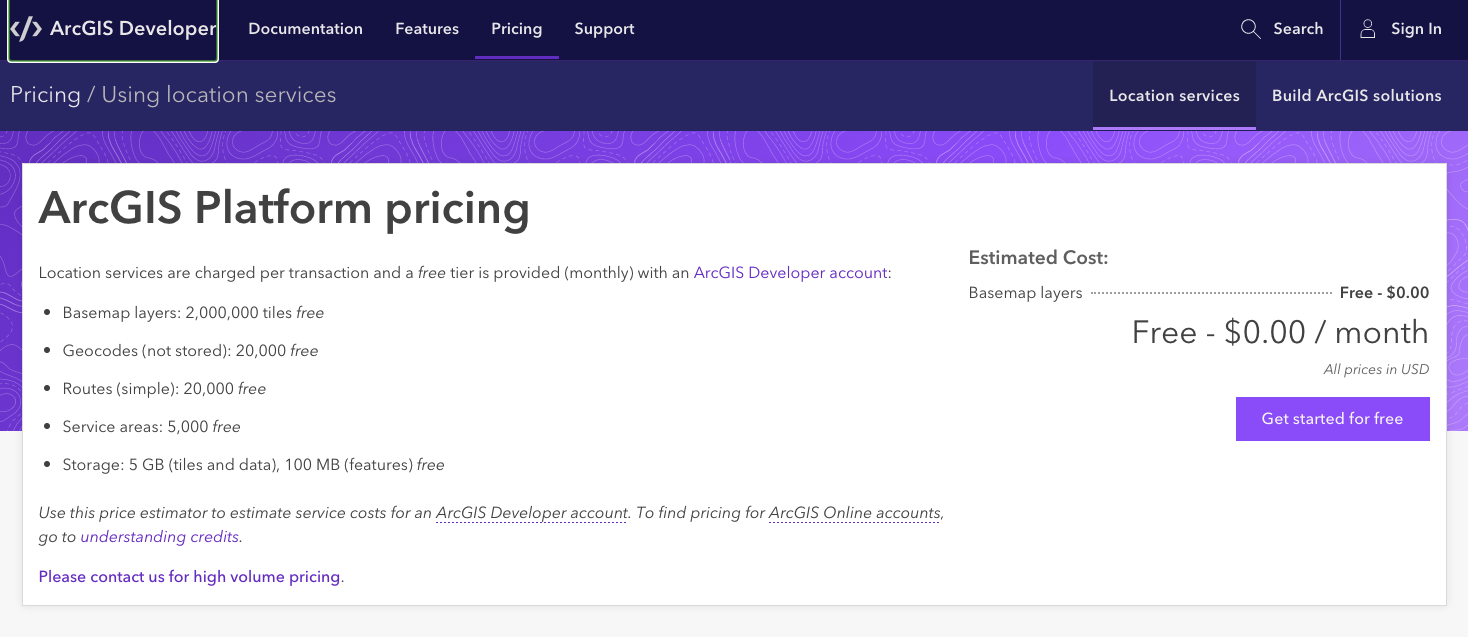
ArcGIS Developer communicates what users can have for free. Screenshot taken, February 16, 2022.
For higher levels of access to resources, features, or value - tiered pricing models allow the developer or business to choose the level of access that they need for their use case of your APIs. As examples, see PayPal Developer’s subscription model or the packages available on Pabbly.
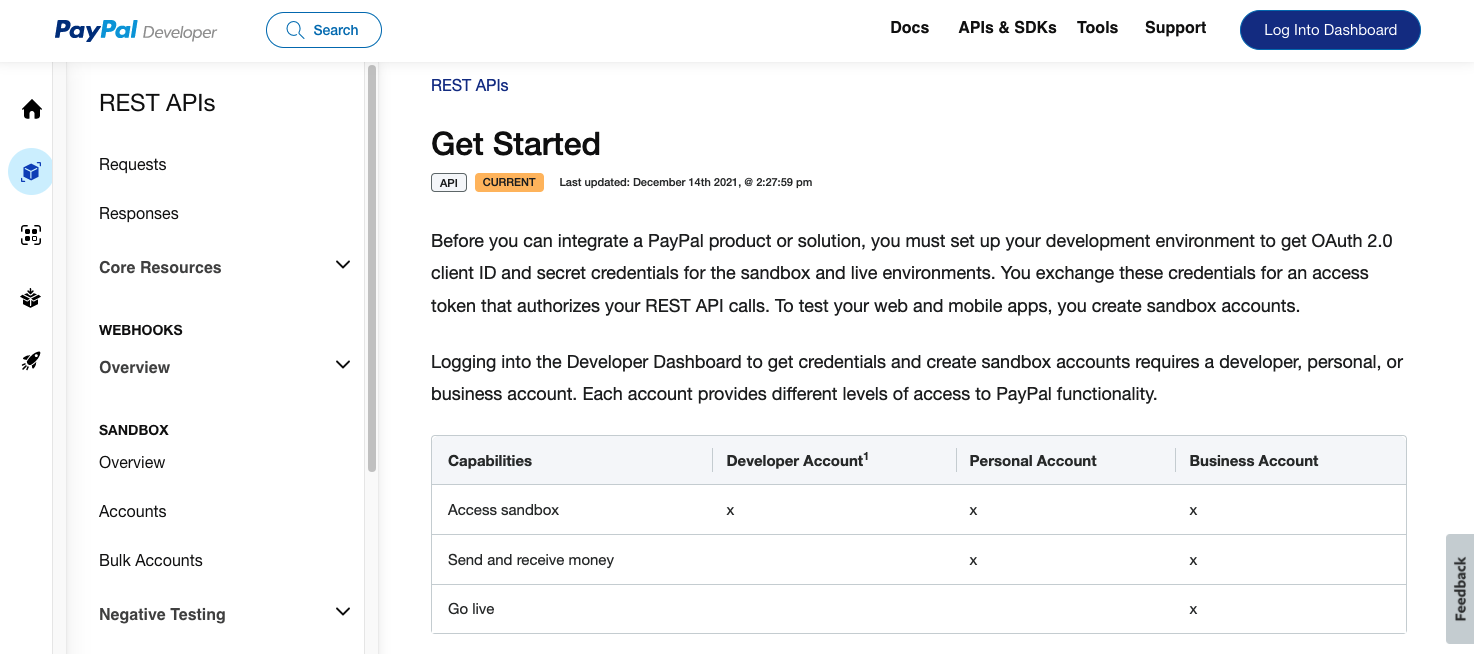

Pabbly’s different packages with discounts based on time and the number of customers. Screenshot taken, February 16, 2022.
Points based pricing models allow developers to pre-buy a limited number of points and then increase their spending based on how quickly they are used up. Different APIs or features are assigned a number of points that are then charged during use. This allows for customization or adaptability by use case for complex systems or interfaces.
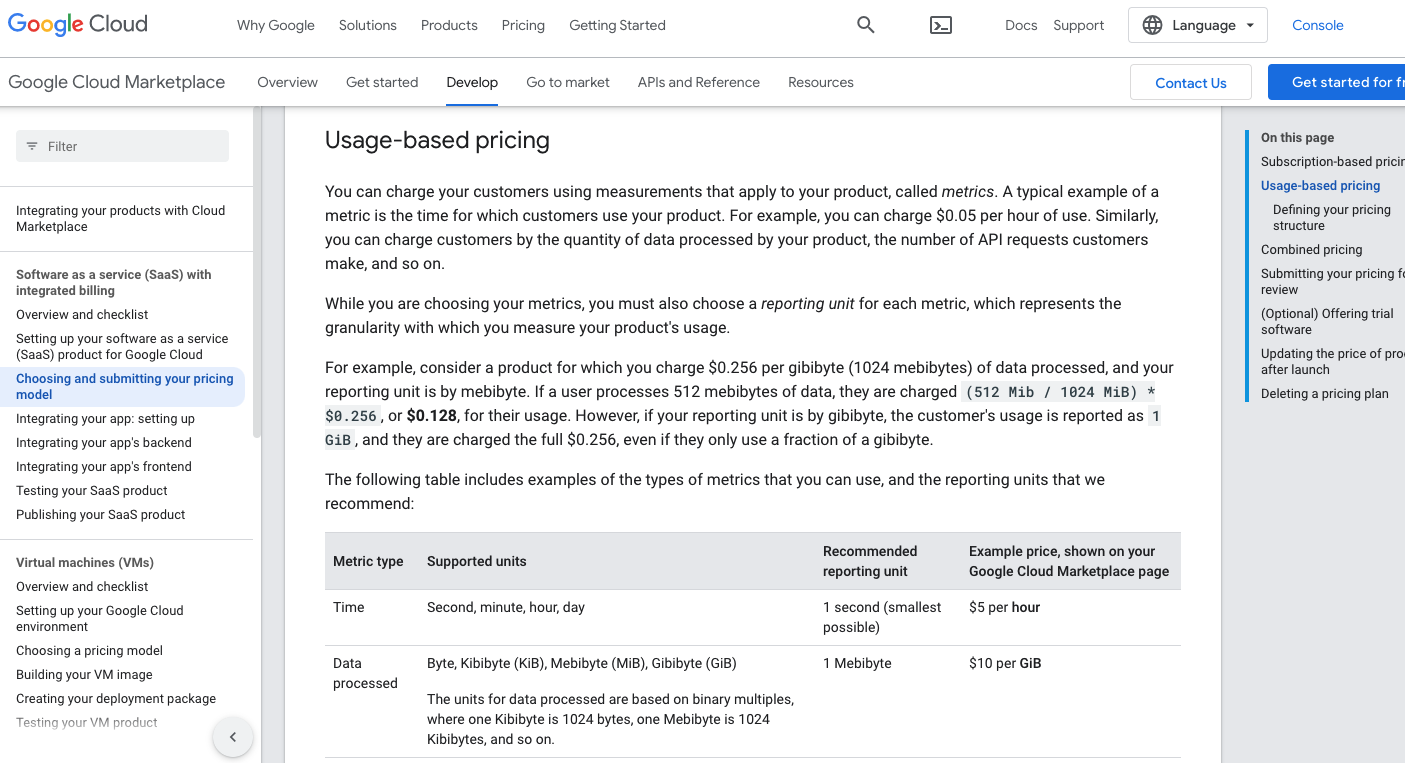
Google Cloud’s point based pricing. They use different metrics and units. Screenshot taken, February 16, 2022.
Finally, a fixed or variable percentage of a transaction can be paid to the API provider. Both Google Maps Platform and Sprint Messaging API provide examples of transaction fees.
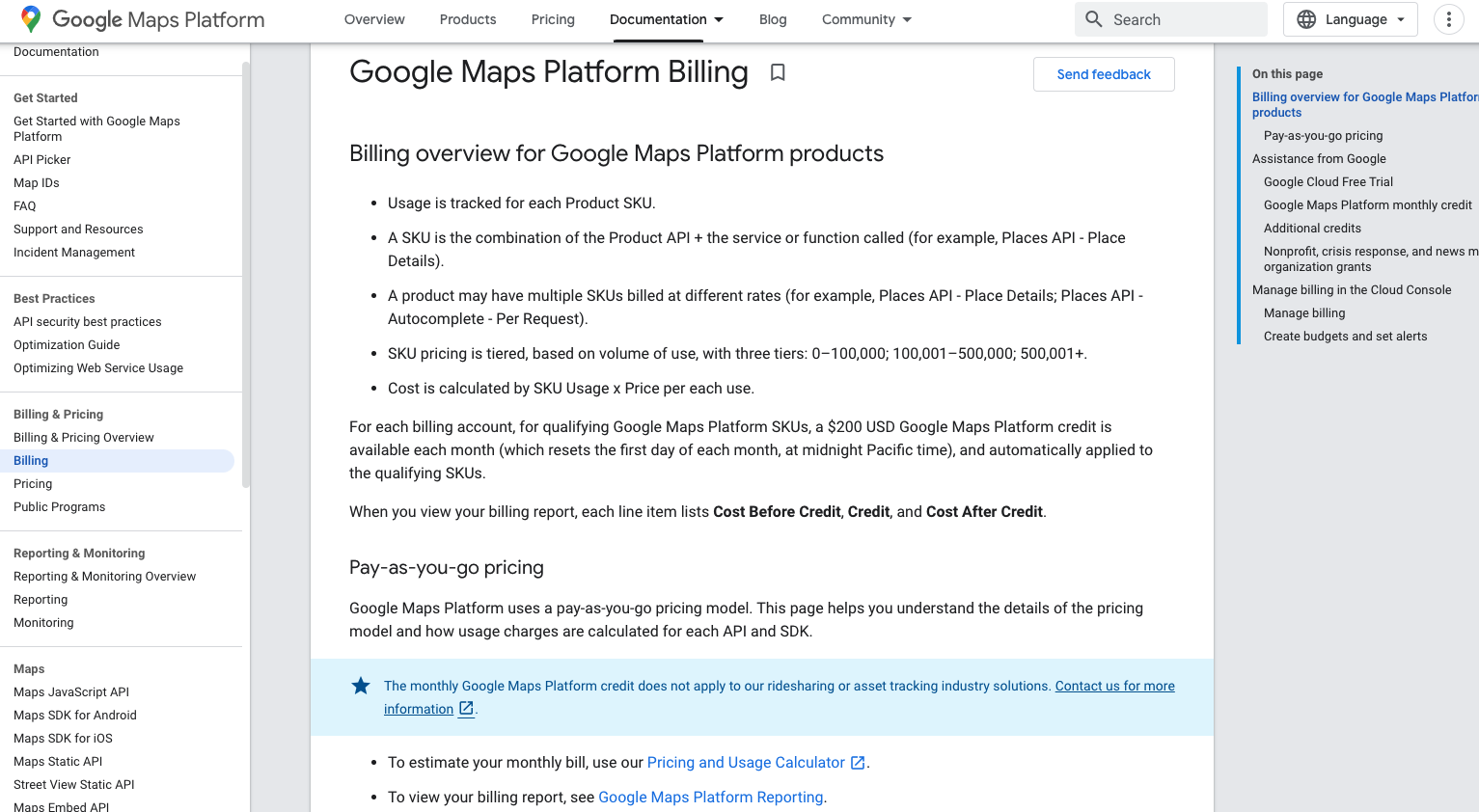
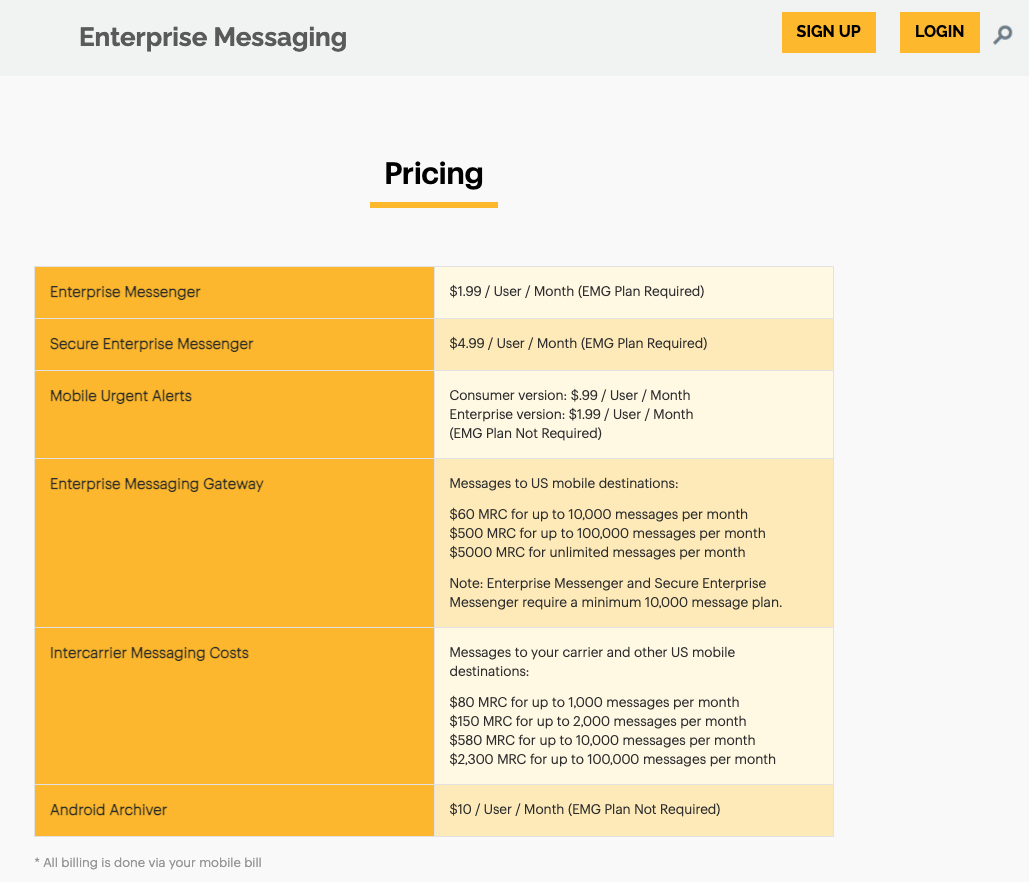
Transaction fees at Sprint Messaging API. Screenshot taken, February 16, 2022.
Monetization model: Developer is paid
In this scenario, the best case is where there is a defined and scaled consumer audience making use of your API. The value for you is if the API is used on a large scale so that providing a monetary incentive for a developer to leverage your web API makes sense.
Sections:
Stripe built a whole business on code that allows businesses of all sizes to accept payments, send payouts, and manage their businesses online. Stripe is the connection between financial institutions (in this case, businesses are monetizing Stripe's software and APIs). Stripe provides indirect success to banking and financial institutions who see additional transactions and websites and apps that have benefited from the opening up of this technology. By making it easy to connect, everyone has benefitted. Shopify shares a similar product that provides businesses access to integrate with an e-commerce experience.
From a developer’s perspective, The Light and Dark Side of the API Economy—article by SWYX, a developer/PM active in the web dev community—sheds light on the opportunities and the challenges companies face in speaking to those developers.
In this model the API consumer (developer) is acting as the agent to help sell a provider API. An example would be any of the travel sites such as becoming an EPS partner for EPS Rapid—Expedia Group Partner Solutions.
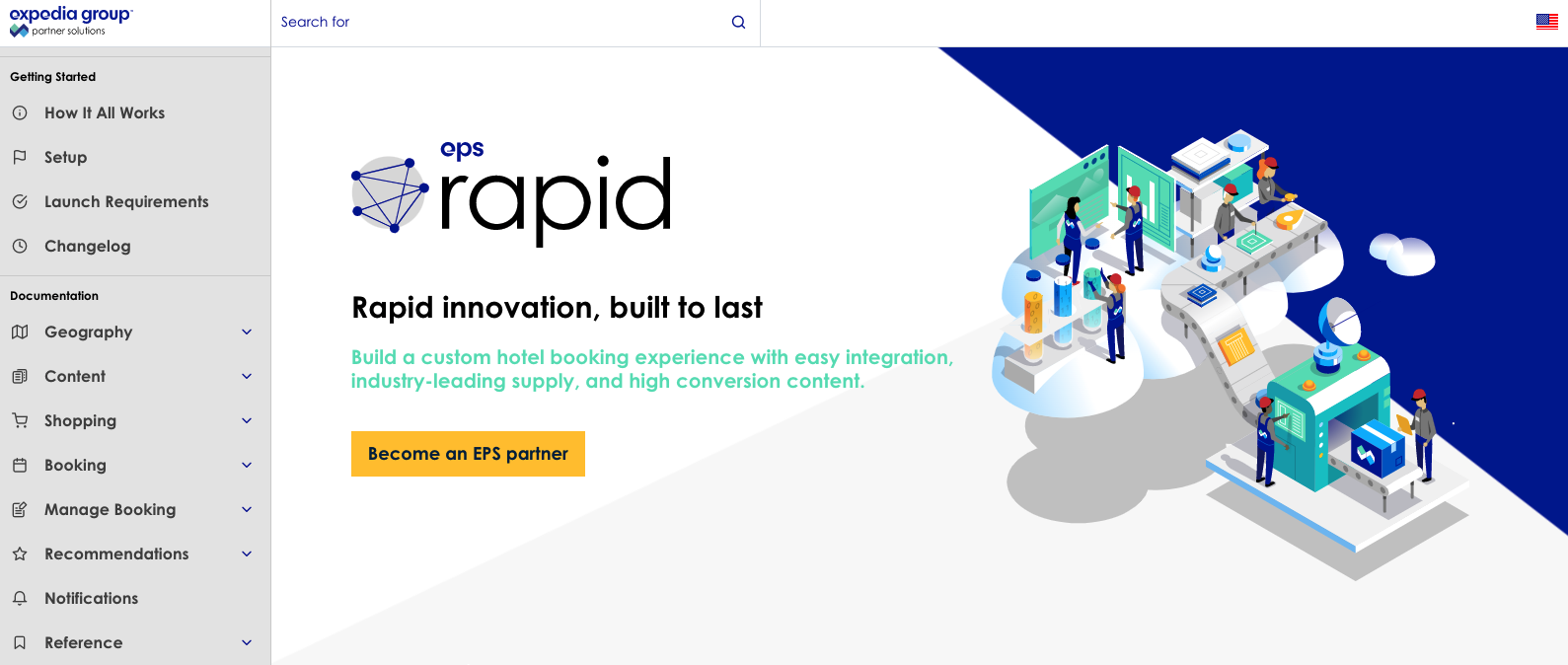
Users can become EPS Rapid’s partners (Expedia Group Partner Solutions). Screenshot taken, February 16, 2022.
A partner includes your content (maybe in an API marketplace) to drive potential customer traffic to you. This can help you to collect impressions, clicks, engagement, or action/acquisition. Examples are Skyscanner, Google Adsense and amazon.com. For referrals, only once an eventual customer purchases the product does the middle party developer earn revenue.
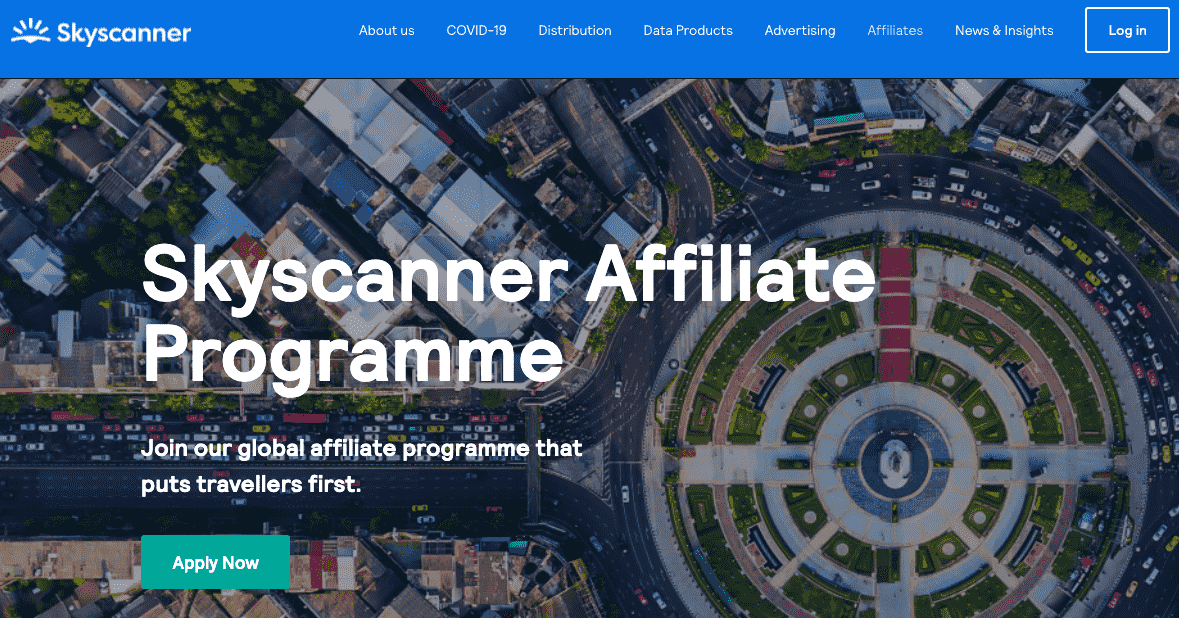
Skyscanner Affiliate Programme offers partners the chance to earn a share of the commission they make on bookings. Partners can promote Skyscanner in text links, banners or travel widgets (the last time we visited the website, it was paused). Screenshot taken, February 16, 2022.
Monetization Model: Indirect revenue streams
The many reasons for using a developer portal as a means of indirectly increasing business through API adoption include:
Sections:
Inviting developers to contribute to use cases using your APIs can shorten the time to bring your hardware products to market. Consumer APIs are used to build customer facing capability for your company. An example is integrations connecting to Amazon Alexa, Netflix, Youtube, and other services.
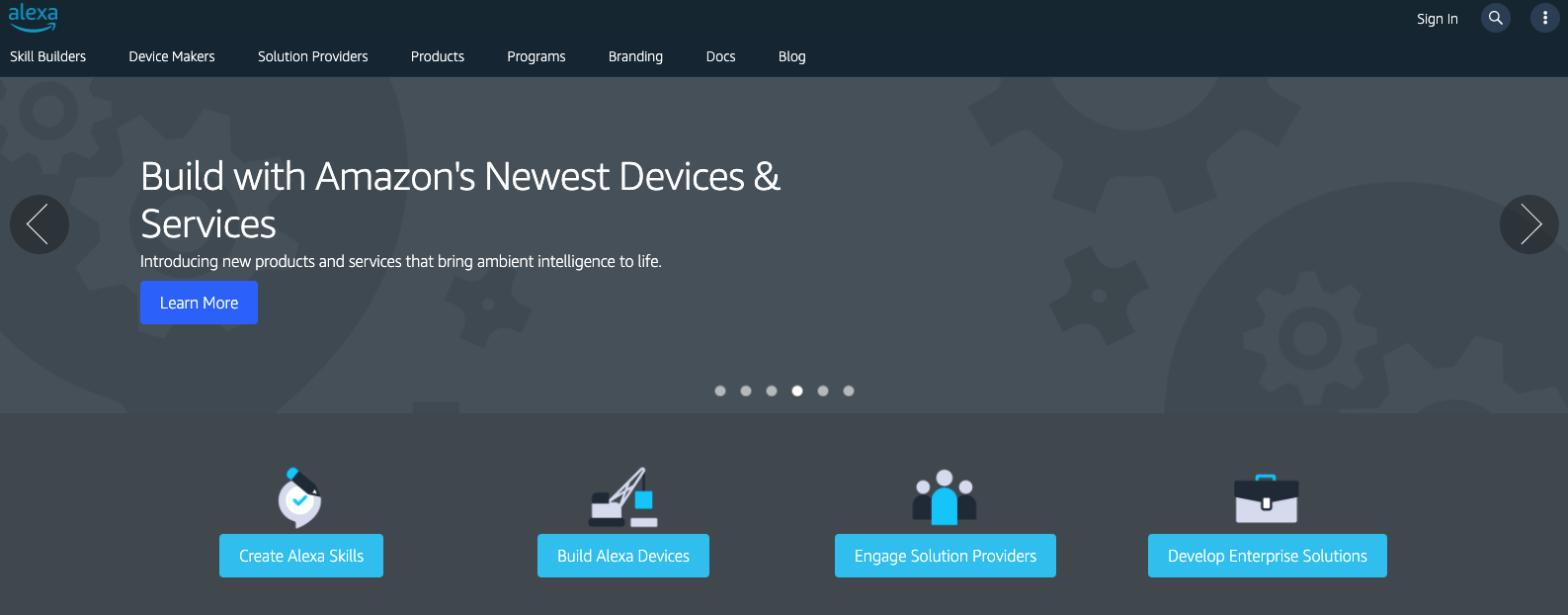
Amazon Alexa’s developer portal combines the hardware and software experience through promotion of Alexa for Skill Builders, Alexa for Device Makers, and Exploration of Enterprise Solutions.
Non-consumer APIs are used to help with productivity, time to market, meeting regulatory requirements, strategy/architecture requirements, or managing domains across geography or lines of business.
As a case study, a banking customer (of Pronovix) created an integration point to allow app developers to push transaction statements into any content. Subsequently, an independent app developer created an app that pushes these transaction statements to notify when friends share a meal and one pays for all, and the others pay them back. The bank benefits from the fact that it’s their bank that integrates with this app. This shows the innovative openness and desire to create useful solutions for its customers.
Another of Pronovix’ banking customers used QR codes as a means of providing a business solution for small businesses to fast-track their customers’ applications with pre-filled forms for loans. Making solutions that are easy for users to adopt are mutually beneficial to both their and your business.
B2B customers have the incentive of customer value when they make use of APIs that integrate with your enterprise. Customer retention through switching costs after deep integration is facilitated by their programmatically connecting to your enterprise capabilities. To change to an alternative provider would be costly.
Examples include B2B ordering, commercial financial interactions, check inventory, shipment status. Examples from a developer portal perspective are Walmart Developer Portal, most commercial banks and, Samsung Developers.
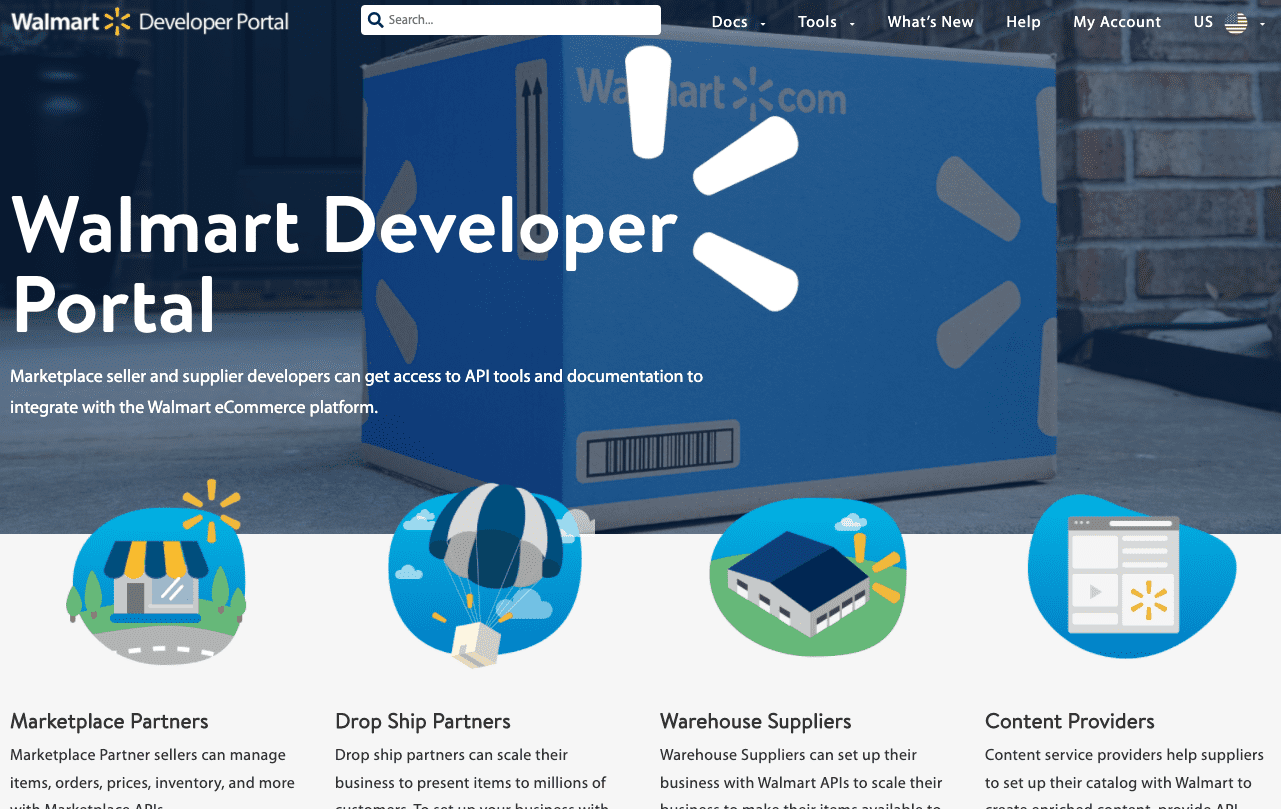
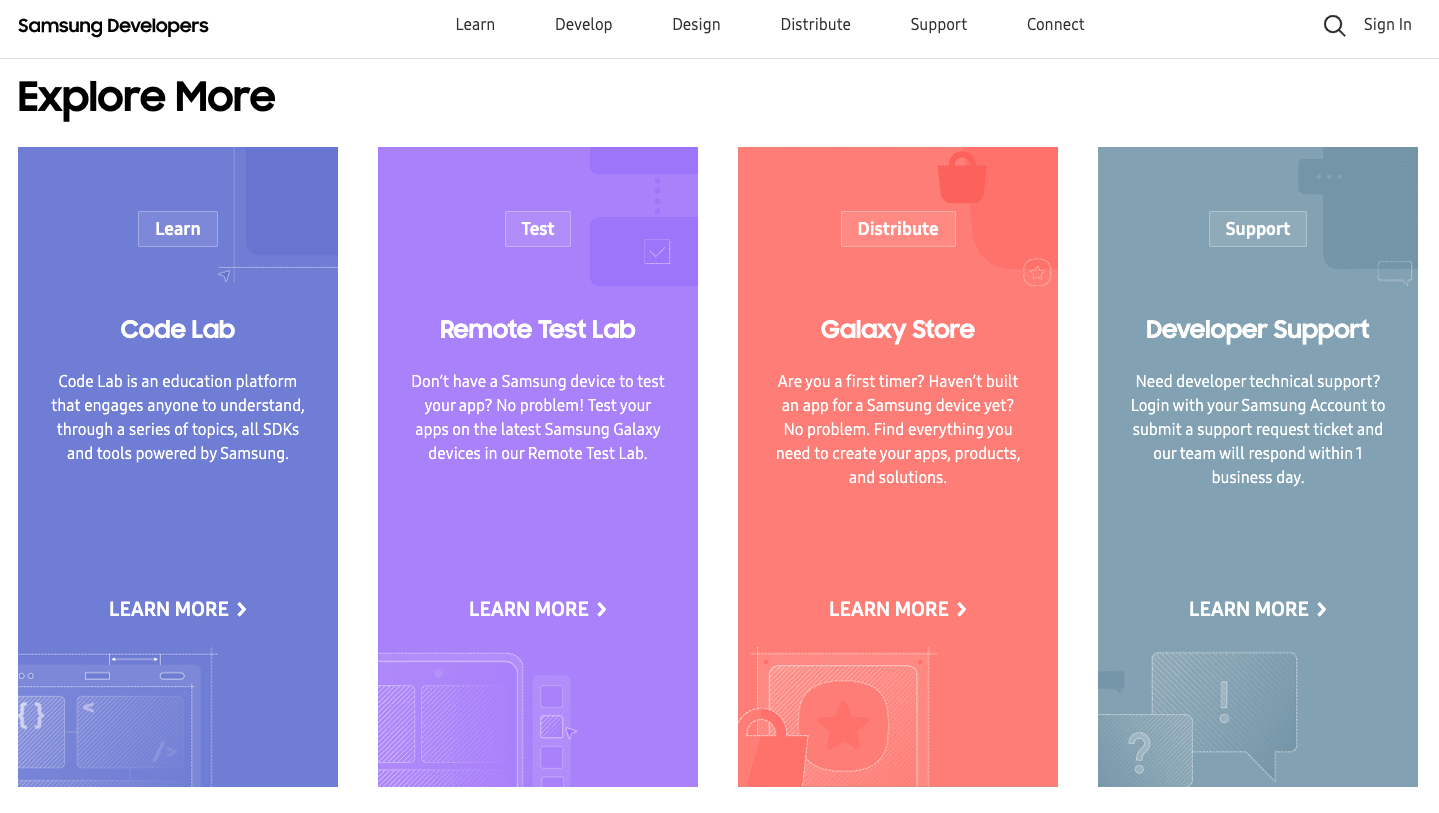
Samsung Developers provides services for a range of interfaces that draw developers to build tools on their platform/OS.
Companies can use a developer portal to market integrations that feed into established product sales. For example, FujiFilm supports its business developers with a FujiFilm Developer Network with ‘easy to implement solutions’ to integrate photo product ordering into apps or websites. It provides RESTful API, iOS, and Android SDKs to control and manage workflow, sales reporting, select photo products, set price points, and enable special offers. The business case for FujiFilm is in supporting the adoption of reselling its products and ensuring the quality experience of how its products are advertised and distributed. The aim is dual: to increase adoption of their technology (via business owners) and for an increase in retail product sales (via end users).
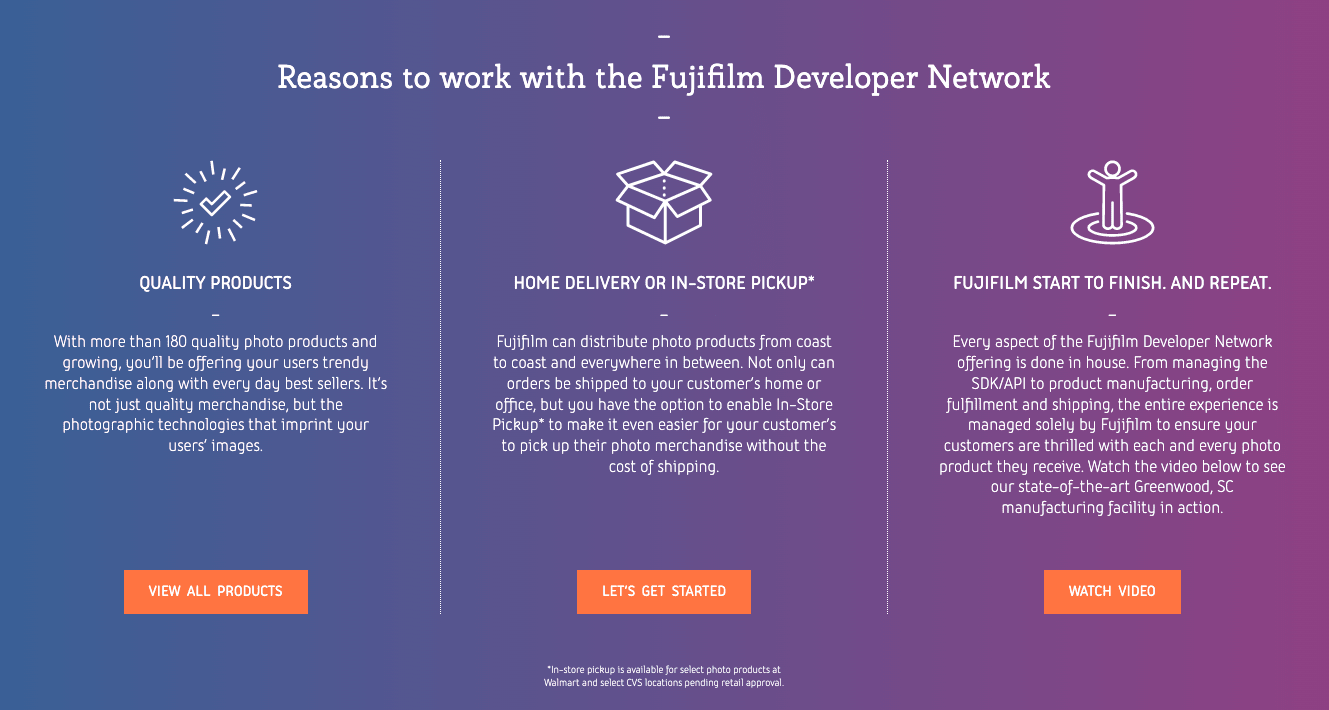
FujiFilm Developer Network focuses on making it easy for developers, creators, and small businesses to integrate with their APIs to increase the resale and distribution of FujiFilm products.
Mark Boyd of ProgrammableWeb illustrates this concept further with a case study on why Phillips targets enterprise, commercial, and hobbyist developers separately in order to innovate.
Content acquisition and content syndication business models work with third parties to submit or distribute content via advertising, monetization, or subscription of your assets. This model is applied for example by Youtube, Twitter, and eBay.
Smartcar.com combines APIs supported from a range of automotive industry companies (e.g. TeslaAPI Docs is directly linked to Smartcar) to provide an app development platform for car share companies.
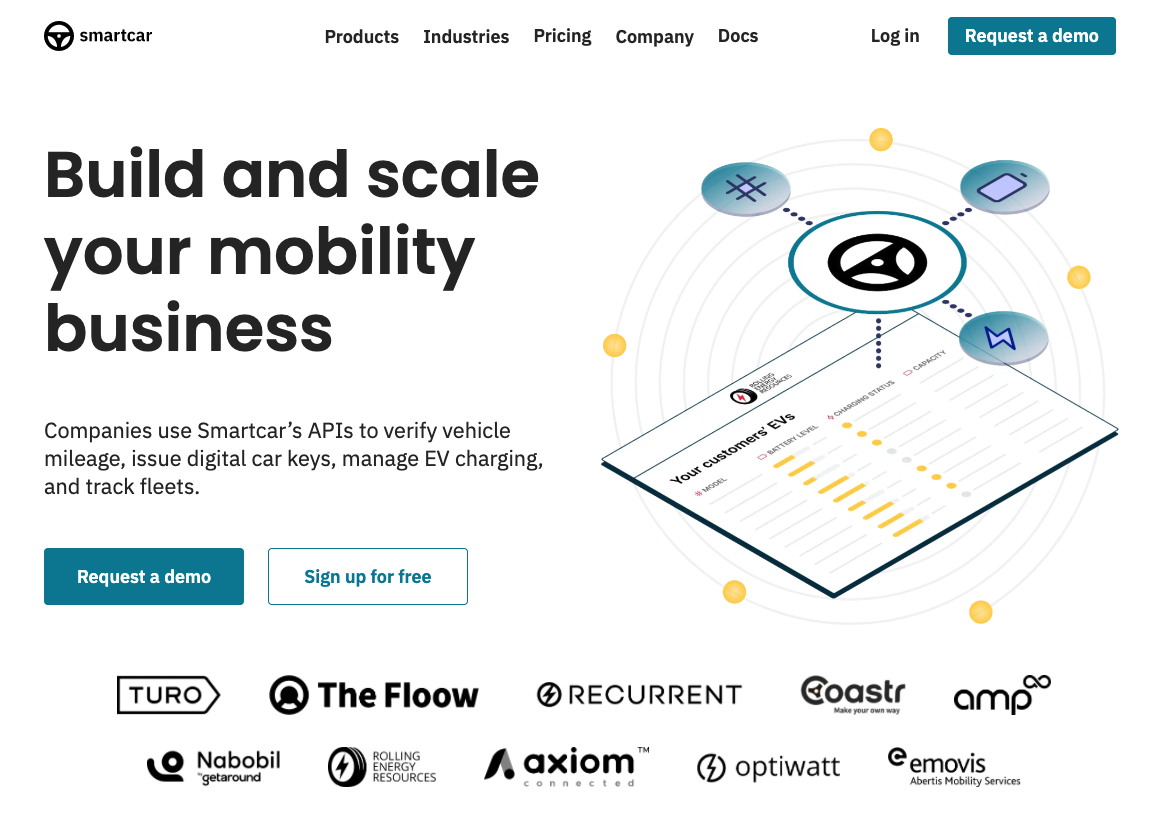
Smartcar is a developer portal that is a one-stop shop for APIs from a range of automotive companies.
Business Expansion integrations expand into new geographies or demographics and offer new products or upsell new capabilities to existing clients. Affordances are promoted. An example is Meta for Developers (Facebook).

Meta for Developers (Facebook) provides tools to developers that help to expand their business via expanding capabilities.
How do you attribute expenses and budget to cost-centers through internal business monetization of APIs or capabilities offered from your IT services? These are the APIs that make libraries and data centrally available within a business so that you can keep track of expenses or cost savings through shared or reused internal assets such as servers, cloud services, and human IT resources.
Internal B2B partner-company integrations used by conglomerate partner-companies to integrate. This is used to increase existing or new company relationships and geographies through rapid partner-company on-boarding. Internal to businesses, the model is used after mergers and acquisitions. Examples include government agencies sharing information and retail/shipping partnerships. External examples are how conglomerate companies are inviting developers or companies to participate in the innovation taking place with their APIs.
Depending on your stage of API program development, these examples of indirect and direct monetization of APIs may be useful in determining your long term vision.
The take home lesson that we have learned through the DevPortal Awards is
A caution here—APIs create ecosystems of dependent use cases and people. A sharp pivot on a decision regarding API availability or access will have a ripple effect on your developers, API consumers, and end users. There are plenty of examples of this in the last ten years with MAANA (FAANG) companies that have since recovered business; but for a smaller enterprise this may not be so easy.
Ultimately, you want your customers to enjoy–and take for granted–the consistency in all aspects of your developer portal. Through their experience of your portal, customers will be more inclined to recommend or make use of your products and services.
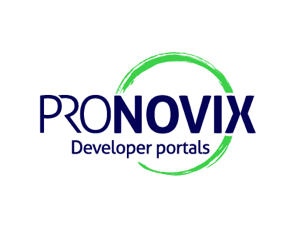
We were inspired by a concise white paper focused on ‘API monetization options’—published in 2016 by IBM, titled API Monetization - Understanding your Business Model Options, by authors Alan Glickenhouse & Larry England—to provide examples of ‘Ways developer portals monetize on APIs’ below.
All Pronovix publications are the fruit of a team effort, enabled by the research and collective knowledge of the entire Pronovix team. Our ideas and experiences are greatly shaped by our clients and the communities we participate in.

Diliny is a Senior Business Product Manager at Pronovix. She focuses on understanding the capabilities of developer portals. Diliny carries out a wide array of research on topics centered on developer portals and the needs of API Teams who manage them. She holds two master’s degrees in Chemical Engineering and Science.
Articles on devportals, DX and API docs, event recaps, webinars, and more. Sign up to be up to date with the latest trends and best practices.

